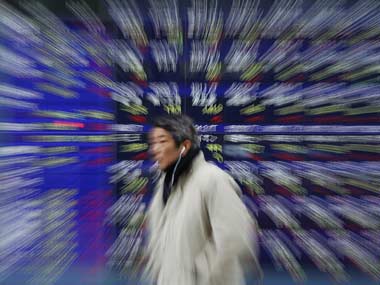Late last year, a rare thing happened in the investment world: a fund manager, who is universally acknowledged as the shahenshah of his investment class, apologised in writing to his investors for having made a horribly bad investment call.
Bill Gross, who heads PIMCO, the world’s biggest bond fund with over $1 trillion in assets under management, offered his mea culpa in a special edition of his investment newsletter in October.
The extraordinary apology was proffered because in April 2011, PIMCO began shorting US Treasury bonds, betting that their prices would decline and interest rates would soar. US Treasures finished the year as the best performing asset class, as fears of a break-up of the eurozone prompted a flight to safety in the US dollar.
[caption id=“attachment_174899” align=“alignright” width=“380” caption=“Short-term movement of asset prices are notoriously hard to predict - even for market mavens. Reuters”]
 [/caption]
[/caption]
It was a spectacularly wrong call: in fact, the Treasuries market turned against Gross at precisely the moment his fund went short. But, bizarrely, it wasn’t the first time it was happening to him; in early 2010, he had similarly prophesied that at the end of the first round of quantitative easing (or monetary policy easing by the US Federal Reserve), interest rates would go up. In fact, they went down.
As the price for Gross’ “double fault”, his Total Return Fund ended 2011 with its first ever outflow in a calendar year in its 24-year history. Today, the chastened bond guru has reversed his call on US Treasuries, and has gone long on them.
Gross is not the only market mahaan to totally reverse an investment call within a year after the market turned against him (although he is the only one to have apologised). Others like Jim Rogers, as confirmed a dollar bear as ever existed, who was chanting “death to the dollar” chants on every TV channel at the height of the 2008 financial crisis, have reversed their call and are loading up on US Treasuries as a short-term play.
A lay investor who had caught these talking heads on television - and, boy, were they there all the time - and blindly acted on their wrong calls would be considerably worse off today. And while the gurus themselves have the agility to shift their positions on a dime, lay investors would have been horribly wrong-footed.
Even economist Nouriel Roubini, who famously prophesied the precise manner in which the financial crisis of 2008 would unfold (although he’d got the timing a bit off), has been so horribly wrong with his short-term calls on the stock market.
In 2009, for instance, Roubini said that the S&P 500 index would slump to 600 . As a bear-case bet, his call couldn’t have been timed any worse. The day that interview came out - 9 March 2009 - was close to the absolute bottom of the stock index, which finished the year considerably ahead. For the rest of the year, Roubini tried talking down the market on every dip, with more of his apocalyptic scenarios.But, again, he proved very wrong every step of the way, as this chart establishes .
Short-term movements of asset prices - from equities to Treasuries - are notoriously hard to predict, and even those who get the big picture absolutely right - as Roubini, to his credit, did - can err in the fine details and on the timing of their calls.
Even if the underlying rationale for their investment calls is sound, markets can, as John Maynard Keynes famously said, remain irrational for far longer than you can stay solvent.
In other words, for all their wisdom and their investment prowess and their carefully built up reputation as _mahaan_s of the markets, these experts are only as good as their last wrong call. And in extraordinary circumstances, they can prove themselves to be just as much of a sucker as you or I.
Remember that the next time you see them on television talking up their portfolios - or even just giving voice to their conviction. The best that can be said of them is that they could well be right on the money - or horribly wrong. The ‘permabear’ sounds smart for sure, but he is far from infallible.
Venky Vembu attained his first Fifteen Minutes of Fame in 1984, on the threshold of his career, when paparazzi pictures of him with Maneka Gandhi were splashed in the world media under the mischievous tag ‘International Affairs’. But that’s a story he’s saving up for his memoirs… Over 25 years, Venky worked in The Indian Express, Frontline newsmagazine, Outlook Money and DNA, before joining FirstPost ahead of its launch. Additionally, he has been published, at various times, in, among other publications, The Times of India, Hindustan Times, Outlook, and Outlook Traveller.
)